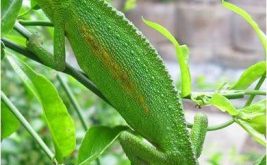Name: The Cyprus Bee
Scientific Name: Apis Mellifera Cypria
Description:
Bee, the special worker of nature! It belongs to the Hymenoptera and it is one of the most beneficial insects known. The bee community is a fine example of collaboration, group work, hard work and self-sacrifice. Their contribution to nature and human’s nutrition is of excellent importance.
Distribution:
In our island, a bee subspecies is found, the Cyprus Bee Apis Mellifera Cypria [3]. The results of studies on this bee tribe revealed a quite astonishing defense behavior expressed against the Vespa Orientalis wasp which is the main natural enemy of the bee [4,5].
Unique characteristics:
While studying the behavior of the Cyprus bees against the wasps, two astonishing behaviors were observed [6]. The first defense mechanism against the wasps involves the surrounding of the wasp of a number of bees (200- 250) that try to circle the wasp and immobilize it as to cause its death by suffocation. The second defense mechanism involves the blocking of the beehives openings with bee-glue leaving small openings through which the wasps cannot pass given their size. Thus the bees avoid any collision with the wasp during the attack [7].
Dangers:
In addition, other threats causing degradation of the bee populations in Cyprus are poisonings by pesticides and insecticides, the destroying of beehives by ignorance and lack of respect and the destroying of the bees’ habitats e.g. through natural land degradation for domestic purposes [1].
Sources:
[1] Christina Christodoulou, «Η προσφορά και το τίμημα των μελισσών», Παγκύπριος Σύνδεσμος Μελισσοκόμων-Μελισσοκομικό Κέντρο (Greek language)
[2] http://savethebees.gr/
[3] Grace, A. (2010): Introductory Biogeography to Bees of the Eastern Mediterranean and Near East. Bexhill Museum, Sussex, United Kingdom.
[4] Butler, C.G. (1954). The World of the Honeybee. Collins, London. pp.226.
[5] Morse, R.A. (1978) Honey bee pests, predators, and diseases. Cornell University Press, Ithaca, N.Y., USA. pp.430.
[6] Papachristoforou et al. (2011). Attack or retreat: contrasted defensive tactics used by Cyprian honeybee colonies under attack from hornets. Behavioural Processes, 86: 236-241.
[7] Papachristoforou, A., et al. (2007). Smothered to death: hornets asphyxiated by honeybees, Current Biology 17: R795-796.
[8] Papachristoforou, A., et al. (2008). High frequency sounds produced by Cyprian honeybees Apis mellifera cypria when confronting their predator, the Oriental hornet Vespa orientalis. Apidologie 39: 468-474.
[9]http://the-drone.blogspot.com
Image source:
http://cybeeas.org/%CE%B7-%CE%BA%CF%85%CF%80%CF%81%CE%B9%CE%B1%CE%BA%CE%AE-%CE%BC%CE%AD%CE%BB%CE%B9%CF%83%CF%83%CE%B1-apis-mellifera-cypria/
 Κυπριακό Κέντρο Περιβαλλοντικής Έρευνας & Εκπαίδευσης – Κυκπεε
Κυπριακό Κέντρο Περιβαλλοντικής Έρευνας & Εκπαίδευσης – Κυκπεε




